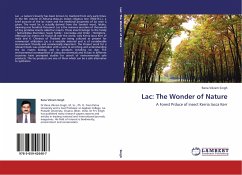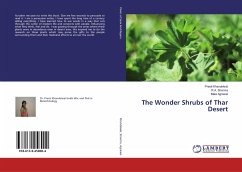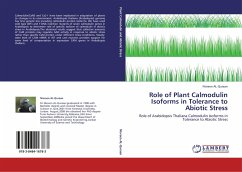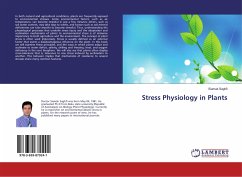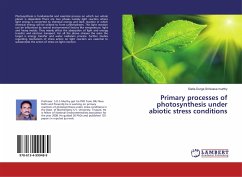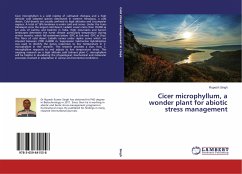
Cicer microphyllum, a wonder plant for abiotic stress management
Versandkostenfrei!
Versandfertig in 6-10 Tagen
41,99 €
inkl. MwSt.

PAYBACK Punkte
21 °P sammeln!
Cicer microphyllum is a wild relative of cultivated chickpea and a high altitude cold adapted species distributed in western Himalayas, a cold desert. Cold deserts are usually confined to high altitudes and circumpolar regions. A total of 16% landmass is under cold arid zones. Under the trans Himalayan zone the largest cold desert, Ladakh covers more than 70,000 sq km area of Jammu and Kashmir in India. High mountains and barren landscapes determine the harsh climate particularly temperature during winter months, which fall sometimes below -30°C at Leh and -70°C at Dras. The flora of cold de...
Cicer microphyllum is a wild relative of cultivated chickpea and a high altitude cold adapted species distributed in western Himalayas, a cold desert. Cold deserts are usually confined to high altitudes and circumpolar regions. A total of 16% landmass is under cold arid zones. Under the trans Himalayan zone the largest cold desert, Ladakh covers more than 70,000 sq km area of Jammu and Kashmir in India. High mountains and barren landscapes determine the harsh climate particularly temperature during winter months, which fall sometimes below -30°C at Leh and -70°C at Dras. The flora of cold desert Ladakh comes under alpine zones which are situated between 2700 m-6000 m. Suppression Subtractive Hybridization was used to identify the genes responsive to low temperature in C. microphyllum in this research. This research provides a clue, how C. microphyllum responds to and adjusts to low temperature stress. This ongoing research on a high altitude cold tolerant plant C. microphyllum will be helpful in elucidating the physiological, biochemical and molecular processes involved in adaptation in various environmental conditions.




